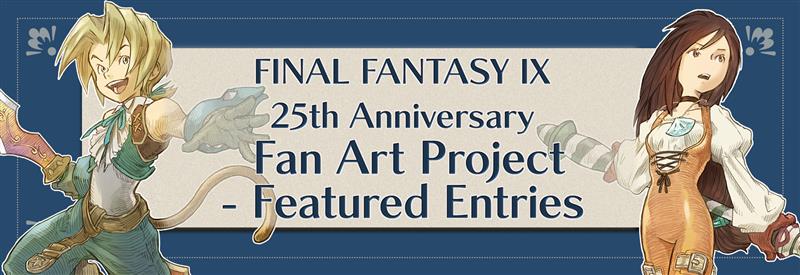
In this three-part symposium, core members of the FFXIV team discuss the development of the game over the past five years, focusing on A Realm Reborn, Heavensward, and Stormblood. We begin with a look at the revamped title and the early days of its development.
Participants
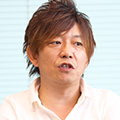
Naoki Yoshida
Producer and Director
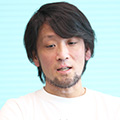
Masayoshi Soken
Sound Director
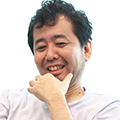
Hiroshi Takai
Development Supervisor

Mitsutoshi Gondai
Development Supervisor
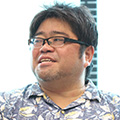
Nobuaki Komoto
Lead Game Designer
The Mayan Prophecy Was About Eorzea!?
The Seventh Umbral Calamity and the Rebirth of FFXIV
―The Seventh Umbral Calamity was an event created as part of your plans to rebuild FFXIV. Where did the idea of tying this together with closing the servers come from?
Yoshida: When we realized something had to be done about Version 1.0, we first did a thorough assessment of the game’s failings and what aspects of it needed improvement. All of the core development team members were involved. It was a rigorous process with many late nights. We came together to discuss the results of our findings on December 28, 2010. After everyone went over their reports, I told them to go home and get some rest, so that I could go over the details of what they found during the New Year break and think about how to proceed. And so I began my review of all their research. There was so much that needed fixing, I think mulling over it all gave me a fever [laughs]. On New Year’s Day, as I sat under my kotatsu thinking about what to do, a television program came on talking about how the Mayans prophesized that the world would end in 2012. We had no concrete plans as to how we would rebuild the game at the time, but I’d been thinking that whatever we did, the maps would have to be remade. And if they had to be built from scratch, blowing up the world could be pretty interesting. That’s when I began writing the plot for the Seventh Umbral Calamity. By the end of January, 2011, we had our plan for the game’s “rebirth.”
―What did you all think when you heard about this idea?
Takai: I knew the game obviously couldn’t stay as it was, but even if we were only changing the visuals, I told them we’d need to decide whether we would completely change the graphical design of the game, or perhaps cancel the PS3 version, as it was having compatibility issues with the PC version. We eventually decided to overhaul the graphics engine, and I also recall talks of wanting a really amazing scenario to mark the end of the world and its rebirth.
―So you had all come to an agreement that, if the game world had to be “destroyed,” that it should be done as an event of sorts?
Takai: We all nodded in agreement when we heard the idea from Yoshi-P.
Yoshida: It’s very FINAL FANTASY, and something most other titles would never be able to do, which made it all the more interesting. Nothing says FF like a giant meteor hurtling toward the planet.
Takai: I remember you bringing up the Mayan prophecy [laughs]. After New Year’s, talks were progressing towards rebuilding the game, and when it came down to how we would go about it, we decided we would use a meteor to explain how the world was destroyed and reborn.
Yoshida: In a lot of older MMORPGs, you weren’t able to carry over data from the beta test to official service, and the whole thing was a bit of a mess. Knowing this was often the case, we decided we needed a definitive end to Version 1.0. If A Realm Reborn had released at the end of 2012, we could have said this is what the Mayan prophecy was really about, but unfortunately, we weren’t able to release the game until 2013 [wry laugh].
From Planning to Execution─
Struggles on the Road to a Realm Reborn
―Could you tell us some of your most memorable moments from the development of A Realm Reborn?
Gondai: When it came to working on the battle system, Yoshida told me I could change things as I saw fit. I was taken aback that he’d put so much trust in me; it was our first time working together and I barely knew him. After all we’d been through with Version 1.0, I was also feeling a bit paranoid [laughs]. Back then, I was convinced that I had to do everything myself, that I couldn’t depend on anyone for anything. But one man can only do so much. Yoshi-P put me in charge of two people he brought over from another project he’d worked on previously, Sato and Yokozawa. They didn’t exactly have any experience working with battle systems, so I thought “Uh, are you guys only here to monitor me?” [laughs]
Yoshida: He had serious trust issues back then [laughs].
Gondai: I’d heard they came over after some issues on their past project, and we were all skeptical of each other [laughs]. There was...I wouldn’t say a sense of nervousness, but we were keen not to show any signs of weakness. That sentiment eventually led to a surprisingly productive working relationship.
Yoshida: I can certainly relate to that. Coming onto a project with hundreds of people seemingly out of nowhere as the new boss, I was expecting there to be resistance, and I had to be ready should that have indeed been the case. There was a lot of tension on the team, but we were motivated, and I think things turned out very well.
Gondai: I can’t say I’d ever focused that hard on work before. But thanks to that focus, we were able to make something really special. What’s more, I learned to trust in people again [laughs].
Yoshida: Glad to see this helped you grow as a person [laughs].
Gondai: The two guys I mentioned earlier have grown a lot, too. It makes me wonder what problems they could have possibly had on their previous project. I’d say they’re two of the best planners in the entire company. Then later on, people like Sudo, who’s considered a god by players, and Nakagawa joined the team. A sort of rivalry developed between us and we all improved immensely as a result.
Yoshida: A bunch of lone wolves coming together to make a pack. We still get a little wild from time to time, but at the end of the day, we’re a team [laughs].
―How was working on the music and sound for A Realm Reborn?
Soken: I wasn’t involved with looking into the problems with Version 1.0. As sound director, I was tasked with everything sound-related except for the music. My department also handled projects outside of FFXIV, so when we were told we’d be working on it we thought, “Do we know what we’re getting ourselves into?” I remember having lunch with coworkers from the department, and we were talking about how we wished a meteor or something would just blow the whole thing up so they could start over. Next thing I knew, this guy named Yoshida showed up saying, “We’re hitting the reset button. Drop a meteor on it.” I thought “No way! They’re actually gonna do it!? This guy gets it!” We were pretty excited [laughs]. Up to that point, the office was─I wouldn’t say it had a bad vibe, but things felt stagnant. With the slate being wiped clean, you could tell people’s feelings toward FFXIV were changing. As I said before, our department works with a lot of titles, so we’re bound to be influenced by the developers. That was when people seemed to start lighting up.

―That’s around the time you started working on the music as well.
Soken: When I first heard they were remaking the maps, I wasn’t expecting much to change. Then I saw their plans. Everything was completely different from Version 1.0. I was at a loss; the music we had wouldn’t work with those areas. To make matters worse, we didn’t have enough tracks so I had to write more. Then they figured “Well if you’re making more music, why not keep doing that after release?” The thing is, they weren’t planning to have only a single track playing all the time in each map. They wanted music that embodied the charm and unique qualities of all the different settlements and locales that filled them. But there was no way we could write the music while the guys making the maps were off doing their own thing. So, I ended up working closely with the guy in charge of map design. We wouldn’t have finished in time if I waited for him to finish a map before I started making the music, though, so I had to write them as they were building the areas. Looking back on it now, things were pretty crazy. We were like machines or something [laughs].
Yoshida: Well, we only had two years to get it done.
Soken: Working on the graphics, design, and sound together, every day was one challenge after the next. At the end of the day, our common goal was to make something appealing to draw people in.
―It sounds like you all were quite motivated, but what was it that kept you going? Was it the chance for a fresh start?
Soken: I wouldn’t say it was our main driving force, but it was a much-needed wake-up call.
Takai: There was a peculiar sense of optimism that things would work out in the end.
Soken: The lack of anyone serious on the team probably helped too [laughs].
Gondai: I was very focused on doing my part for the project instead of thinking about the overall synergy of the team, and when I saw the people around me making headway I’d think, “You guys aren’t leaving me behind!”
Yoshida: There was definitely a sense of everyone trying to outdo each other [laughs]. At the time, I found FFXIV’s situation to be unbearable. There were all these players who’d been waiting for the game, some even buying new computers specifically to play it, and we failed to deliver. What’s more, Komoto had to divide his attention between directing FFXIV and addressing problems with other company projects. Stuck between a rock and a hard place, he chose to put the other projects first, constantly pulling late nights at the office to keep up with all his work. Of course, this wasn’t the reason for players’ anger. I believe that’s a separate issue the company should have dealt with. Internally, the team had caught a lot of flack for what happened, but I’d always thought, “This wasn’t all the FFXIV team’s fault. Wasn’t this also because the company was in a bind?”
Takai: There was no shortage of angry people back then, that’s for sure.
Yoshida: And with all this going on, what did you think when a bunch of strangers invaded your team?
Komoto: We’d discussed my stepping down as director even before you were here. There was still the matter of how I would continue supporting the project to figure out, and when you joined the team, I had to accept the situation and focus on the task at hand. But then it was decided the game would be remade, and I was told to see Version 1.0 out until the end. In a way, I think we managed to finish things on a positive note. The original game was a failure, but it resulted in a truly unique shared experience.
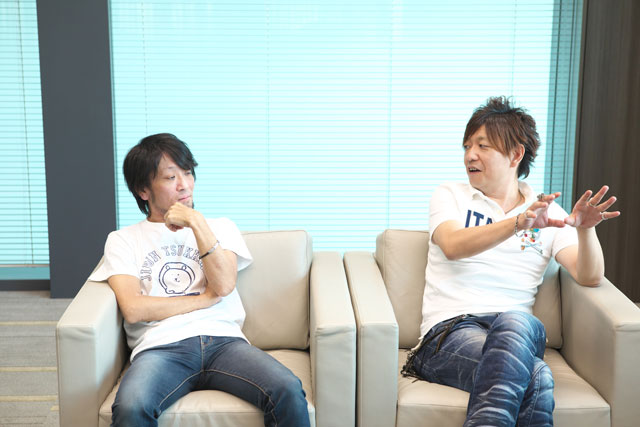
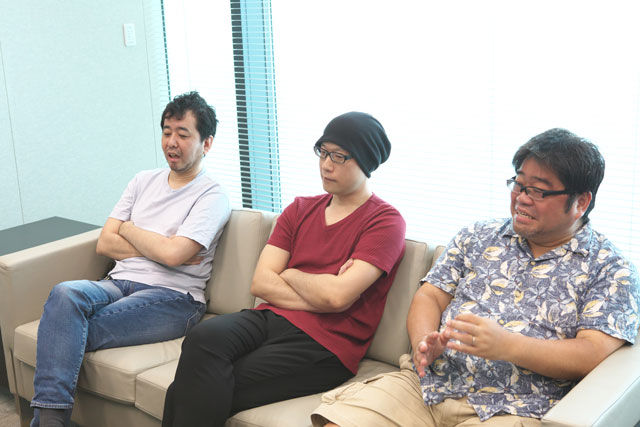
Looking to the Future in A Realm Reborn
―FFXIV had a clean slate starting with A Realm Reborn, but what kind of game did you want it to become?
Gondai: While drawing on our experience creating FFXI, we also took inspiration from World of Warcraft (*1), which was incredibly popular at the time. Rather than focus on forming parties to go kill monsters for experience, we wanted players to accomplish this through completing quests, so they could enjoy themselves even when playing solo. Of course, we also wanted to put an emphasis on story and scenarios where players join forces to overcome powerful enemies. Another important aspect of the game was time. As working adults, we thought it would be more appealing if people could play without having to devote significant amounts of time to it.
Yoshida: Games in the FF series were originally standalone RPGs, so it was important to let players enjoy the game even when they’re alone, and for any content that required help from others, we created the Duty Finder. In hindsight, there are several things I wish we could have done differently or gone back to fix, but we simply didn’t have the time.
Gondai: As I said before, our intention was a system where players could level up through quests, but as we only had two years of development time, there weren’t enough quests. This resulted in players playing through dungeons over and over again, which we never intended for them to do, and we certainly hadn’t planned to implement a level syncing system.
Yoshida: Knowing players would have a need to repeat dungeons, we took various steps to simplify their design, but the ones in A Realm Reborn still bear remnants of their original designs. For example, the Sunken Temple of Qarn contained bees with a Final Sting attack that can kill you in one shot. Because of their placement in the original dungeon, players were ecstatic to clear it even once.
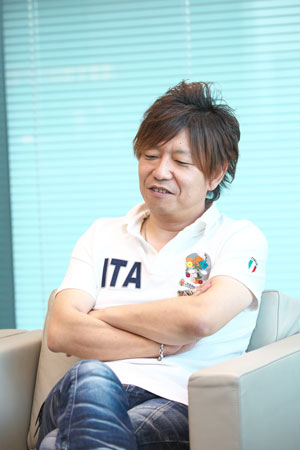
Takai: The design of Tam-Tara Deepcroft was so complex, even if you had 90 minutes you couldn’t clear it.
Soken: Yeah. I thought, “There’s no way anyone’s finishing this.” [laughs]
Yoshida: We reduced the number of levels by about half, right?
Gondai: Originally there were a lot of paths you didn’t have to take, and you’d often find bosses waiting for you. But since these dungeons needed to be repeatable, we made changes so that even a random party formed in the Duty Finder could work their way through without getting lost.
Takai: There also used to be several places where, if you fell, you’d have no way of getting back to your original route.
Yoshida: Ah, I remember that. You had to wander about to find a switch to unlock a path back, or something like that. FF dungeons always have mazes and puzzles, so we thought we’d try it in Tam-Tara.
Gondai: We designed it expecting players to run out of time on their first try and clear it on their second attempt.
Yoshida: But when you did manage to complete them, you would see a lot of progress in terms of the story. It wasn’t simply content you passed through on the way to something else, it was a climactic struggle like a primal battle.
Soken: And because they were so much bigger back then, it was a nightmare rigging the sound. When I had to work on places like the Thousand Maws of Toto-Rak I was like, “Whoa...this is huge...”
Yoshida: That one was brought straight over from the original FFXIV, so it was a different type of dungeon to those that debuted in A Realm Reborn. We made a lot of changes, but I wish we had removed the floors that give you the Leaden debuff [laughs]. That “peeew!” sound really gets on my nerves! [wry laugh] There was originally something like a time bomb up ahead, and you had to get to it as quickly as possible, which is why we introduced the debuff that slows you down. But later, when we were adjusting the dungeon for repeated playthroughs, we got rid of the bomb. We ran out of time to change anything else, though, and the sticky floors got left in there.
Soken: That “peeew” thing you mention was just one of the problems Takai and I had to solve together. There are so many sound effects, we had a lot of trouble keeping within the PS3 memory limitations.
Takai: I tried to keep things in check, like, “You can’t have separate sound effects for every single thing. Some of them have got to share the same sound,” and so on.
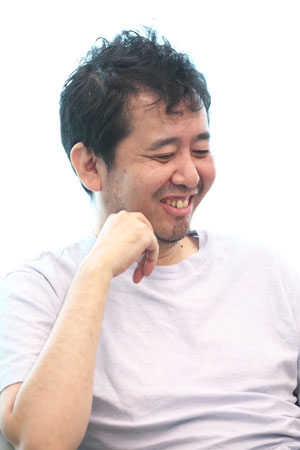
*1 World of Warcraft: MMORPG produced by Blizzard Entertainment in which each character belongs to one of two warring factions. The total number of users has exceeded 100 million, and the title is listed several times in the Guinness World Records.
―The “Duty Ready” notification has such a distinct sound effect that FFXIV players in Japan have taken to using the word “shakeeen!” as part of their slang.
Soken: It originally played when you filled the third limit break gauge. I was asked to come up with something you can clearly make out, even in the heat of battle above, like, four hundred other sound effects. You know when you’re in a really noisy place like an arcade or a train station, but there are certain sounds that you can hear above everything else? That was what I had in mind when I made it, but then the UI team said that because it catches people’s attention, they wanted to use it for the “Duty Ready” pop-up.
Yoshida: The dev team didn’t take too well to the “shakeeen” sound at first. They said it was too loud and felt out of place. That was kind of the point, since it was designed for the limit break gauge, and it was obviously going to stand out. They would say things like, “Why does it go ‘shakeeen’? I swear you got that idea from somewhere else!” [laughs]
Gondai: We were told it was just a placeholder effect, but we eventually got used to it.
Soken: I actually made another sound just for the Duty Finder. Problem was, when I put it in, everyone was all like “Why did you change it?” [laughs] When it comes to sound effects, you can’t tell how things are gonna work out until they are actually released to the public. There are tons of cases of that, like the effect that played when you make a new character and start the game for the first time. It originally sounded like breaking glass and was meant to represent going inside the crystal, but it also played when you log in. If too many people were trying to access the server, you’d get kicked back to that screen and the same sound would play every time. It got annoying real quick, so we switched it out for something easier on the ears.
Gondai: We had the same kind of thing with the graphical effects used in battles. They’d be too flashy or too bright, so we’d ask the team making the visuals to tone them down.
Yoshida: And they hated having to change any of the “perfect” effects they’d made! [laughs]
Takai: We also had trouble getting the timing for attacks right.
Yoshida: Even now, that’s a thorn in our sides.
Gondai: Ideally, we want the attack animations to be in sync with when the damage is actually dealt. But if it’s a three-hit action, it doesn’t do any damage until the third hit. We originally planned it so that the HP goes down even when you’re still only on the first or second.
Yoshida: A recent example of this problem would be the black mage’s Aetherial Manipulation, where we had to adjust the delay from inputting the command to the action triggering. Players found that split second between holding up the rod and the movement occurring really frustrating, so they asked us to tweak it.
Gondai: It’s the same with the dragoon’s jump attacks. People want us to change the amount of time it takes for you to be able to move again.
Soken: Yeah, that’s why they asked us to adjust the animations too.
Yoshida: It’s because it looks weird if they trigger too late. It can also mess with the timing for processing damage and so on.
Takai: The designers tend to prioritize the graphics and animations, but once they start playing the game properly, they learn how to see it from the battle team’s perspective. “Oh, that’s what they mean about the jumps being too slow. If you get stuck in one spot for too long, you won’t be able to dodge that attack and end up dead.” [laughs] That’s why I’m always telling the designers to play the game. If they do, they’ll be able to figure out potential pitfalls.
Fine-Tuning the Gameplay
―Balance changes to jobs in MMOs have a habit of causing a stir among the playerbase. Which adjustments made in A Realm Reborn do you remember the most?
Gondai: For me, it was the changes made to warriors. There was an attack in the Binding Coil of Bahamut that was supposed to be a one-shot kill, but paladins were able to survive it, so nobody wanted warriors to tank in that battle. The real issue was that the paladin’s stats were too high, but we couldn’t exactly nerf them because players who had until then been beating that content might not be able to anymore. We were in a situation where we had no choice but to buff warriors, which I remember very clearly. The other thing was the dragoon’s magic defense. When it comes to the pros and cons of the job, they were designed to be weak against spell damage, but made up for this in other areas. The trouble is, with the gradual increase in average item level, this would’ve eventually become a major problem. We were thinking about changing it at some point, but a lot of players reached out to us, asking us to fix it, so we ended up making that adjustment sooner than we’d originally planned.
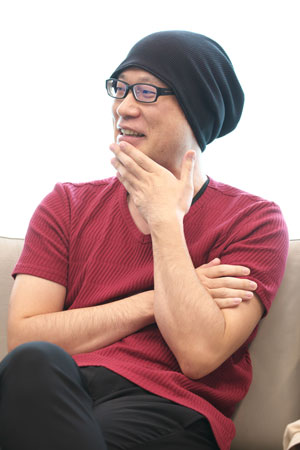
Yoshida: It still took a while, though. Around Patch 2.4, I think.
Takai: Dragoons got a reputation for dying all the time in Second Coil of Bahamut, too.
Gondai: The boss has a ton of magic attacks, and doesn’t let up, so if you’re KO’d once, it’s hard to get back into it. Now that I think about it, we should’ve dealt with that a whole lot sooner.
―The first few boss fights in A Realm Reborn used instrumental music, but later on, more and more songs had vocals. What was the intent behind that?
Soken: The shift in style was kind of planned, but also kind of not. We were gonna use some of the tracks from the original FFXIV. The song for the Ifrit battle was fine, but the old music didn’t work with Garuda’s, so we came up with something new. You see, the primals all have a heap of background info, like their role in the story, and what kind of followers they have. The battle planners take a look at those docs and we have a meeting to figure out what we’re gonna do with each primal. For Garuda, we wanted music that would really stand out, so we used vocals in the chorus, but when we later got around to writing the Titan track, we had to come up with something that packed an even bigger punch.
Yoshida: Titan’s theme is about the kobolds crying to their god for help, so the vocals were a natural fit.
Soken: At first, I was thinking of some kind of tribal music, until I got asked to write something intense. Like I said, there was really detailed info for the primals themselves, but I didn’t get anything like that for the music itself. I was told, “Do it however you like.” I’m into rock music, and Titan is pretty much a rock himself, so the rest is history [laughs].
Yoshida: The original lyrics for Titan’s song were...something else. I was on a business trip when they sent me the track, but before I had a chance to listen to it, the US team asked me, “Have you heard the lyrics?” to which I said, “Why? Is there something wrong with them?” and they told me the whole song was one huge problem and to scrap the vocals entirely [laughs]. When I heard it, the track was full of really bad language. Soken told me he wasn’t actually planning to use it, but still... [laughs]
Gondai: It was the kind of stuff that you can’t say on TV.
Soken: Yeah, and it was only that, over and over.
Gondai: As a member of the dev team, I was like, “Sure, whatever,” but there are rules we have to follow.
Komoto: Even bumping up the rating of the game wouldn’t have been enough.
Takai: I can’t believe the dev team was willing to go along with it! [laughs]
Yoshida: Everyone was saying how great it was, and I thought, “You guys can’t be serious!” [laughs] But the music itself was awesome, so we kept that and got Koji to write some proper lyrics for it. The final version went over really well with the players.
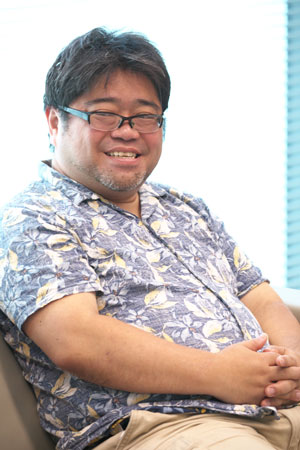
―There are Normal, Hard, and Extreme versions of the primal battles, but what work goes into adjusting the difficulty?
Gondai: We thought it would be okay to make the content in A Realm Reborn on the hard side. Harder than it is now, in fact. Like we talked about before, we designed the dungeons so that you wouldn’t be able to complete them on your first try. Maybe your second or third. Kenji Sudo designed Amdapor Keep, including the demon wall’s pushback mechanics and the part in the Anantaboga fight where you have to hide behind the statues to avoid being KO’d. We got the feeling it was too difficult but went ahead and tried it anyway. With the raids, a lot of players who completed them said they were too easy, which we saw as their way of challenging us to make future content harder [wry laugh]. Tanking is tricky, but people said that DPS is too simple because all they have to do is attack, so we introduced some gimmicks for them in Ramuh Extreme.
Yoshida: The team builds up a knowledge base through this process of trial and error, and the dev members themselves gain valuable experience in designing MMOs. But with the amount of work they do, there’s no way they wouldn’t grow.
Gondai: It really is all about trial and error. Some people were saying that Final Coil of Bahamut was too easy, so while developing Normal difficulty content and upping the overall scale of the project for Heavensward, we tried to make the Savage raids hard enough to satisfy these players and ended up catching a lot of flack for it. For that, you all have our apologies.
Yoshida: I thought “Anyone who can’t beat Faust [enemy fought before the boss in Alexander - The Fist of the Father], should quit now! You said this game is too easy, didn’t you? Then how about this!?” I guess I got kind of carried away, and made a bad call.
Takai: Back then, every time we’d beat a raid, we’d go complain to the dev team, “Why can’t you design stuff that makes us feel good about completing it!?”
Yoshida: And they’d come back with, “If we do that, you and Maehiro will start bragging that it’s too easy!” [laughs]
Takai: Then I’d say, “It’s our job to give the players something to brag about, though! Make the raids more fun!” [laughs]
Gondai: We don’t mind the boasting, but we got the impression you really did think it’s not hard enough. We figured out that if you guys say it’s too easy it means we’ve probably hit that sweet spot in terms of difficulty.
Reflecting on the Rebirth of Eorzea
―Is there anything else you’d like to say about the transition from the original FFXIV to A Realm Reborn?
Komoto: I remember being really surprised by the number of returning players. We weren’t fully prepared for it and had to restrict logins for a while, but I was thrilled that so many people came back to us, and there were lots of new players, too. In fact, that day made such a lasting impression on me that it’s hard to recall much else. I’ve got nothing but love for you guys. Thank you all so much!
Gondai: During the development of A Realm Reborn, Yoshida told us to give it everything we had. But after that, it was, “Our first patch is really important, so we have to work hard on Patch 2.1,” then, “We need to do our best on Patch 2.2 as well,” and before we knew it, we were onto, “The expansion is a huge deal, so we’ve got to give this our all, too.” That was while working on ninja and PvP, and I constantly felt like we were pushing ourselves way beyond our limits. Before I knew it, we ended up where we are today. I also remember taking part in the fan festival, and while I’d never done anything like that before, I was able to meet the fans in person, and really get a sense that these guys are taking the time to play our game. It was an awesome experience. I’ll be thinking about all you players out there while I’m working on FFXIV.
Takai: We went through a lot to get A Realm Reborn released, but seeing the reaction from the players made it all worthwhile. I also remember how Komoto was crying his eyes out at the end of the 2014 fan festival in Japan. I thought, “Aw, he really is human, after all!” [laughs]
Komoto: What made you think I’m not!?
Takai: I always thought that no matter what happens, that was the one line you’d never cross.
Yoshida: But then you ended up crying, too.
Takai: Yeah, only because Komoto was! That was enough to make even an ol’ wolf like me cry! [laughs]
Soken: We were working on A Realm Reborn at the same time as the original FFXIV, so things were crazy back then. That’s gotta be the toughest job ever. But like Gondai was saying, we went straight from that into Patch 2.1, then 2.2, and Heavensward, and the work just kept coming in. Suddenly I realized, this was the busiest I’d ever been. Seriously, I thought this guy was trying to kill me! [laughs] He’ll stroll over and casually drop something on me like, “Sorry to dump this on you, but I want you to write the Heavensward theme.” It’s a lot of work to keep a game like this running, but when I see how nuts the players go for all the new content, I feel like it was worth the effort. I’m sure you’ll enjoy what we have in store!
Yoshida: A lot has happened in the shift from the original FFXIV to A Realm Reborn. There are so many great memories, but the fan festivals, with the crowd cheering and screaming, really left an impression on me. It was a whole lot more than just an enjoyable experience. In fact, the degree of enthusiasm the fans showed was overwhelming. To see that our game had grown into something that brings people together and generates this amount of hype was incredibly satisfying. I still feel exactly the same way now, and it’d be great to bring even more experiences like these to the fans. We’ll continue to expand the world of FFXIV, and I hope to see you all there!
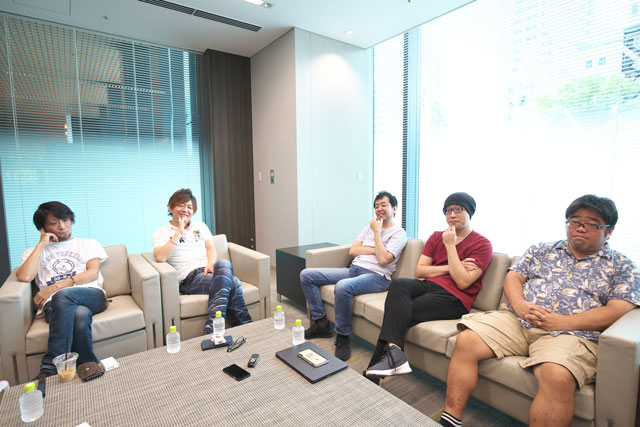
This article was originally published in the FINAL FANTASY® XIV: Official Magazine – 5th Anniversary Edition, which went on sale in Japan on October 18, 2018.


